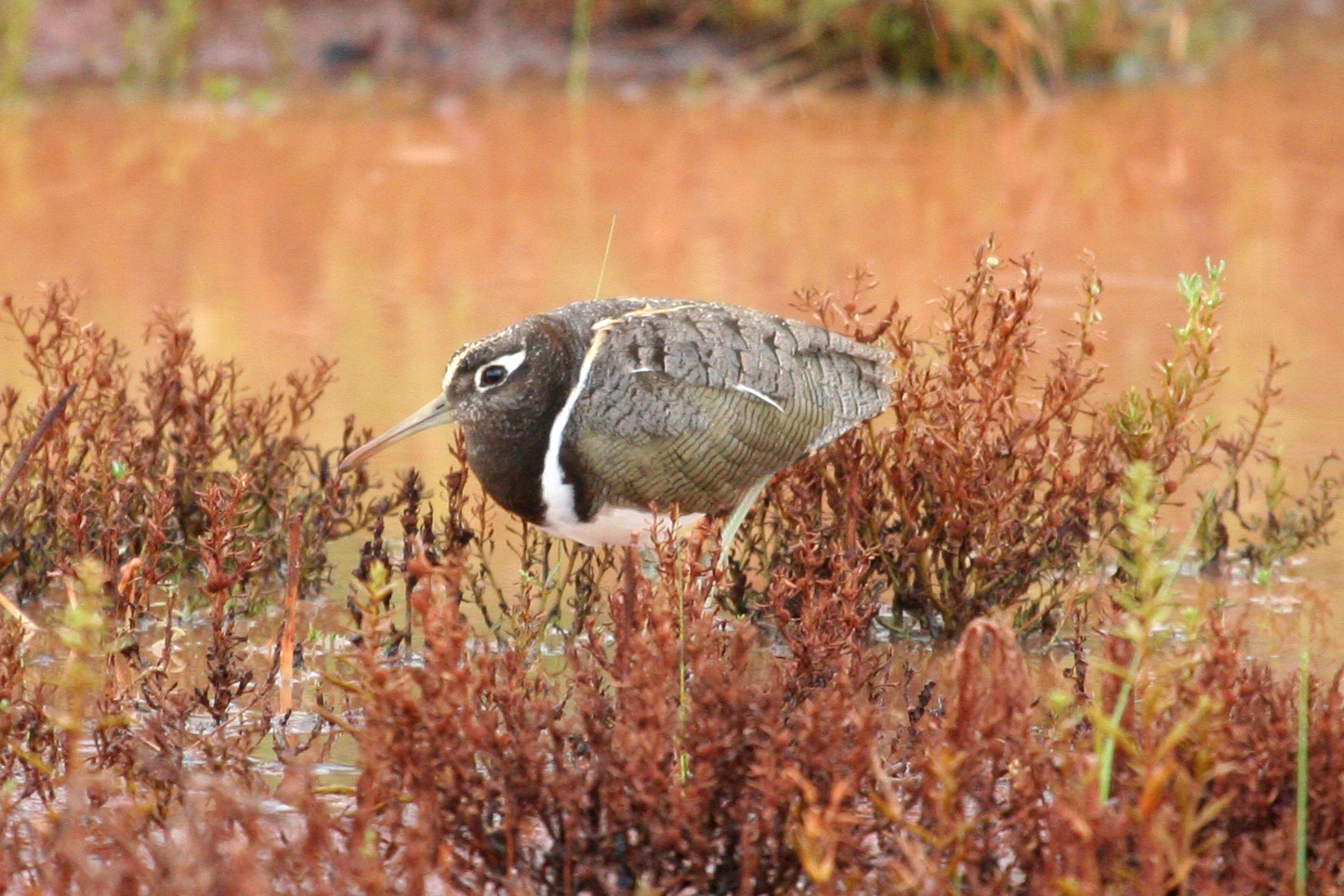Elected representatives in government are in charge of the policy and funding that can make or break saving threatened species. Their decisions and actions matter.
McPherson has or used to have 25 threatened animals within its boundaries. One of them is me, the Australian Painted Snipe.
We took care to attach appropriate images that are as close to representative of each species as our resources and the availability of images allowed. However, we could not ensure perfect accuracy in every case. Some images show species that share the same genus but not at the species or subspecies level.
Australian Painted Snipe
Rostratula australis
Status: Endangered
The Environment Protection and Biodiversity Conservation Act 1999 (EPBC Act) lists threatened species under six categories:
Extinct, Extinct in the wild, Critically Endangered, Endangered, Vulnerable, Conservation dependent. Read more about these categories
Rostratula australis is found across 145 electorates.
The Australian Painted Snipe is a stocky wading bird around 220–250 mm in length with a long pinkish bill. The adult female, more colourful than the male, has a chestnut-coloured head, with white around the eye and a white crown stripe, and metallic green back and wings, barred with black and chestnut. There is a pale stripe extending from the shoulder into a V down its upper back. The adult male is similar to the female, but is smaller and duller with buff spots on the wings and without any chestnut colouring on the head, nape or throat. This species is generally seen singly or in pairs, or less often in small flocks. Flocking occurs during the breeding season, when adults sometimes form loose gatherings around a group of nests. Flocks can also form after the breeding season, and at some locations small groups regularly occur. Groups comprising of a male and up to six offspring have been observed.¹
Explore more about this species on the Atlas of Living Australia




Explore more about the threats facing species on our Resources page.
- Acacia attenuata (Acacia attenuata)
- Scented Acronychia (Acronychia littoralis)
- Border Ranges Lined Fern (Antrophyum austroqueenslandicum)
- Hairy-joint Grass (Arthraxon hispidus)
- Marbled Balogia (Baloghia marmorata)
- Three-leaved Bosistoa (Bosistoa transversa)
- Miniature Moss-orchid (Bulbophyllum globuliforme)
- Stream Clematis (Clematis fawcettii)
- Small Helmet-orchid (Corybas montanus)
- Stinking Cryptocarya (Cryptocarya foetida)
- White-flowered Wax Plant (Cynanchum elegans)
- Cyperus semifertilis (Cyperus semifertilis)
- Smooth Davidsonia (Davidsonia johnsonii)
- Small-leaved Tamarind (Diploglottis campbellii)
- Floyd's Walnut (Endiandra floydii)
- Rusty Rose Walnut (Endiandra hayesii)
- Ball Nut (Floydia praealta)
- Southern Fontainea (Fontainea australis)
- Sweet Myrtle (Gossia fragrantissima)
- Monkey Nut (Hicksbeachia pinnatifolia)
- Macadamia Nut (Macadamia integrifolia)
- Rough-shelled Bush Nut (Macadamia tetraphylla)
- Clear Milkvine (Marsdenia longiloba)
- Southern Ochrosia (Ochrosia moorei)
- Wollumbin Dogwood (Ozothamnus vagans)
- Lesser Swamp-orchid (Phaius australis)
- Nightcap Plectranthus (Plectranthus nitidus)
- Spiny Gardenia (Randia moorei)
- Scrub Turpentine (Rhodamnia rubescens)
- Native Guava (Rhodomyrtus psidioides)
- Quassia (Samadera bidwillii)
- Ravine Orchid (Sarcochilus fitzgeraldii)
- Waxy Sarcochilus (Sarcochilus hartmannii)
- Tallebudgera spikemoss (Selaginella andrewsii)
- Sophora fraseri (Sophora fraseri)
- Small-leaved Hazelwood (Symplocos baeuerlenii)
- Smooth-bark Rose Apple (Syzygium hodgkinsoniae)
- Rose Apple (Syzygium moorei)
- Austral Toadflax (Thesium australe)
- Tylophora woollsii (Tylophora woollsii)
- Westringia rupicola (Westringia rupicola)
You are in federal electorate McPherson.
